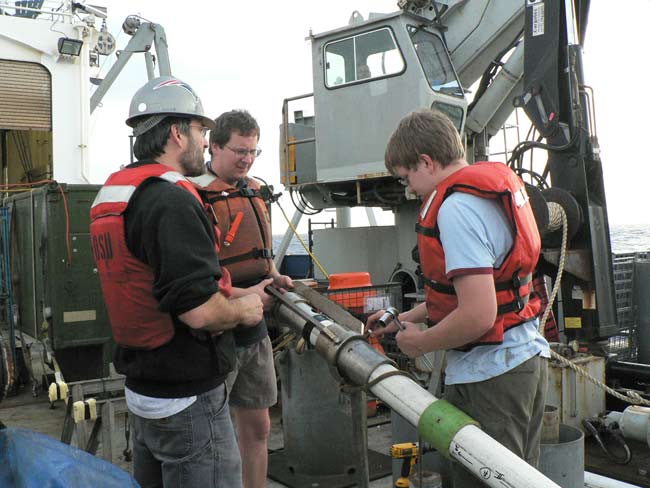The Most Lifeless Place in the Ocean Found

Scientists have discovered what may be the least inhabited place in the ocean.
The seafloor sediments in the middle of the South Pacific have fewer living cells than anywhere else measured, a new study found.
Oceanographer Steven D’Hondt of the University of Rhode Island and colleagues took a boat out to the middle of the ocean and collected cores, or cylindrical samples of sediment, from the bottom of the sea about 2.5 to 3.7 miles (4 to 6 km) deep.
They found about 1,000 living cells in each cubic centimeter of sediment — a tally that is roughly 1,000 times less than in other seafloor sediments.
"People were previously just taking cores in parts of the ocean fairly close to shore and assuming their results were typical of the ocean as a whole," D'Hondt told LiveScience.
D'Hondt suspects that further research will show other areas out in the middle of the ocean may be similarly devoid of life. He and his team detailed their results in the June 22 issue of the journal Proceedings of the National Academy of Sciences.
The area they explored in the South Pacific is what's called a gyre, where the water is relatively still and nutrients are low.
Sign up for the Live Science daily newsletter now
Get the world’s most fascinating discoveries delivered straight to your inbox.
The sparse microbes the scientists discovered appeared to be partially subsisting on hydrogen atoms released when radioactive elements at the bottom of the ocean decayed and broke apart water molecules.
This somewhat rare process produces only small amounts of food. The other half of the microbes' diet comes from organic matter that drifts from the surface down to the depths of the ocean.
"If you can support the concentrations we see on a food source that's basically half hydrogen from the radioactive splitting of water, then maybe you can support a few hundred cells in wet sediments on Mars or Europa," D'Hondt said. "It suggests that life is resilient enough under very low access to food."
Wild Things: The Most Extreme Creatures
Video: Extremophile Hunter Searches for Impossible Life
All About the Sea










